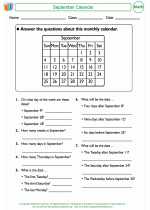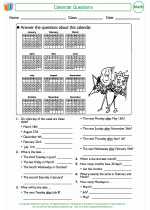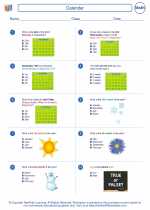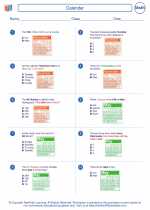Quadratic Equations
A quadratic equation is a second-degree polynomial equation in a single variable x.
The general form of a quadratic equation is:
ax2 + bx + c = 0
Where x represents the variable, and a, b, and c are constants with a ≠ 0.
Ways to Solve Quadratic Equations
- Factoring: If the quadratic equation can be factored, setting each factor equal to zero will give the solutions.
- Quadratic Formula: The quadratic formula can be used to find the solutions for any quadratic equation.
- Completing the Square: This method involves manipulating the equation to create a perfect square trinomial, from which the solutions can be found.
- Graphing: Graphing the equation and finding the x-intercepts can give the solutions.
Important Concepts
- Discriminant: The expression b2 - 4ac, which determines the nature of the solutions.
- If the discriminant is positive, the equation has two distinct real solutions.
- If the discriminant is zero, the equation has one real solution (a repeated root).
- If the discriminant is negative, the equation has no real solutions (two complex conjugate solutions).
- Vertex: The vertex of the parabola represented by the quadratic equation is located at the point (h, k), where h = -b/2a and k = f(h).
- Axis of Symmetry: The line x = -b/2a, which passes through the vertex of the parabola and divides it into two symmetric halves.
Practice Problems
Solve the following quadratic equations using the method of your choice:
- 2x2 - 5x + 2 = 0
- x2 + 4x + 4 = 0
- 3x2 - 7x - 6 = 0
Applications
Quadratic equations are widely used in physics, engineering, economics, and many other fields to model various real-world phenomena such as motion, trajectories, optimization, and more.
.◂Math Worksheets and Study Guides Fourth Grade. Calendar
Study Guide Calendar
Calendar  Activity Lesson
Activity Lesson Calendar Calculations
Calendar Calculations  Activity Lesson
Activity Lesson Calendar Template & Yearly Activities
Calendar Template & Yearly Activities  Activity Lesson
Activity Lesson February Calendar
February Calendar  Activity Lesson
Activity Lesson September Calendar
September Calendar  Activity Lesson
Activity Lesson Research - Days & Months
Research - Days & Months  Activity Lesson
Activity Lesson Calendar Questions
Calendar Questions  Worksheet/Answer key
Worksheet/Answer key Calendar
Calendar  Worksheet/Answer key
Worksheet/Answer key Calendar
Calendar  Worksheet/Answer key
Worksheet/Answer key Calendar
Calendar 

 Activity Lesson
Activity Lesson
 Activity Lesson
Activity Lesson
 Activity Lesson
Activity Lesson
 Activity Lesson
Activity Lesson
 Activity Lesson
Activity Lesson
 Activity Lesson
Activity Lesson
 Worksheet/Answer key
Worksheet/Answer key
 Worksheet/Answer key
Worksheet/Answer key
 Worksheet/Answer key
Worksheet/Answer key

The resources above cover the following skills:
Knowledge of Measurement: Students will identify attributes, units, or systems of measurements or apply a variety of techniques, formulas, tools, or technology for determining measurements.
Applications in Measurement: Apply measurement concepts.
Determine start time, elapsed time and end time (Assessment limit: Use hour and half hour intervals).